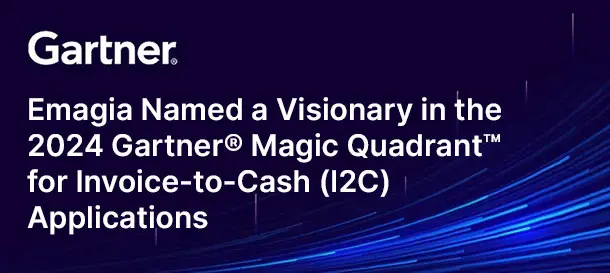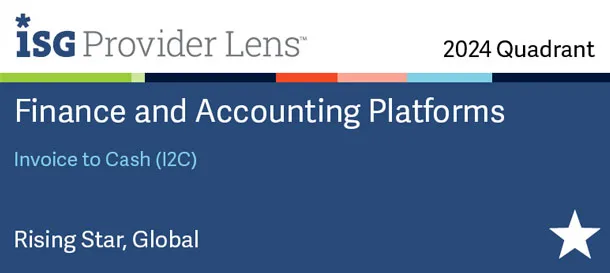In today’s digital-first economy, the line between finance automation vs. autonomous finance is blurring fast. Finance automation focuses on streamlining routine accounting and reporting processes through technology. In contrast, autonomous finance enables systems that think, predict, and act independently—ushering in a self-driving financial future powered by AI in finance and machine learning in finance . This article explores what sets them apart, their evolution, and how businesses can leverage both for sustainable growth.
Understanding Finance Automation in the Modern Financial Landscape
Finance automation represents the first step in the journey toward intelligent finance. It involves using software tools to automate repetitive tasks such as invoice processing, reconciliations, expense tracking, and payroll management. By reducing human error and improving efficiency, organizations free up finance teams for more strategic work.
Automation also enables end-to-end finance automation where data flows seamlessly across accounts payable, receivable, and general ledger systems. It provides consistency, accuracy, and faster financial closes. In many enterprises, this stage lays the groundwork for digital transformation in finance.
Core Components of Finance Process Automation
Typical components include workflow automation, Robotic Process Automation (RPA) in finance , and integrated financial reporting systems. RPA bots replicate manual actions—extracting data, validating entries, and executing rule-based tasks—at scale and speed. These tools serve as the foundation for more advanced systems that apply intelligence and adaptability.
Benefits of Finance Automation
Finance automation reduces manual workloads, ensures compliance, accelerates cycle times, and cuts costs. CFOs gain visibility into cash flow and can monitor KPIs in real time. This stage also introduces financial data governance—a prerequisite for more complex autonomous systems later on.
What Is Autonomous Finance?
Autonomous finance goes beyond automation. It introduces systems capable of analyzing data, making decisions, and learning continuously. These autonomous financial systems function with minimal human intervention, adapting to new data patterns and generating recommendations or executing actions proactively.
Imagine an autonomous accounting system that detects anomalies, predicts late payments, and adjusts cash flow forecasts automatically. This is where the future of finance is heading: from automation to autonomy.
Key Traits of Autonomous Finance
- 1. AI-powered finance solutions: Using advanced machine learning models to process vast financial datasets.
- 2. Predictive analytics in finance: Anticipating risks, revenue trends, and liquidity challenges.
- 3. Proactive finance operations: Making data-driven decisions instantly rather than reactively.
- 4. Self-optimizing finance systems: Constantly improving performance through continuous feedback.
Autonomous Finance Benefits
The major advantages include agility, accuracy, resilience, and real-time responsiveness. Financial leaders can shift from reactive reporting to proactive forecasting, improving organizational competitiveness and decision velocity.
The Evolution: From Manual to Intelligent and Autonomous Finance
The transformation began decades ago with spreadsheets and ERP systems. Over time, organizations embraced workflow digitization and robotic automation. The next wave—intelligent finance automation—integrates AI, data analytics, and process intelligence to deliver autonomous cash flow forecasting and real-time financial insights.
Manual Finance Era
In traditional finance departments, teams handled reconciliations, collections, and journal entries manually. Errors, delays, and inefficiencies were common. Limited visibility hindered accurate forecasting, especially for global enterprises managing multiple currencies and entities.
Automation Wave
With the rise of finance process automation and RPA, organizations began digitizing core operations. Routine processes were streamlined, creating faster monthly closes, automated reporting, and better compliance monitoring.
The Shift Toward Autonomous Finance
Next-generation AI-powered systems now analyze unstructured data, interpret anomalies, and act based on predictive outcomes. This leap transforms finance teams into strategic partners, rather than transactional processors. It’s the dawn of self-driving finance .
Key Technologies Powering Finance Automation and Autonomous Finance
Behind the scenes, various technologies enable the transition from simple automation to intelligent autonomy.
Robotic Process Automation (RPA)
RPA handles repetitive, rule-based activities—data extraction, validation, posting, and report generation—offering accuracy and scalability. However, it still requires human supervision and lacks contextual decision-making.
Artificial Intelligence and Machine Learning
AI introduces learning capability. Machine learning in finance detects trends, identifies anomalies, and predicts outcomes like credit defaults or payment delays. Over time, algorithms improve autonomously, providing better forecasting accuracy.
Predictive Analytics and Financial Data Intelligence
Predictive models use historical and live data to identify trends in revenue, expenses, or liquidity. These insights power autonomous financial systems that can act on data without manual input. The result: data-driven agility.
Cloud Computing and Integration
Modern finance ecosystems depend on cloud infrastructure for scalability, agility, and real-time data access. Integrated APIs and data lakes allow autonomous finance systems to process information from multiple sources instantly.
Finance Automation vs Autonomous Finance: Core Differences
While both automation and autonomy improve efficiency, the distinction lies in intelligence and independence. Automation executes programmed tasks; autonomy makes context-aware decisions.
| Aspect | Finance Automation | Autonomous Finance |
|---|---|---|
| Functionality | Automates repetitive processes | Analyzes data and acts intelligently |
| Technology | RPA, basic workflows | AI, ML, predictive analytics |
| Human Involvement | High – requires supervision | Low – self-driven systems |
| Outcome | Efficiency | Adaptability and foresight |
| Goal | Task automation | Strategic decision enablement |
Real-World Use Cases of Finance Automation
Many enterprises already leverage finance automation for routine accounting tasks. Examples include:
- Accounts receivable automation for faster collections and improved cash flow visibility.
- Automated financial reporting ensuring consistency across business units.
- AI audit tools simplifying compliance checks.
- Finance digital transformation improving productivity and operational transparency.
Real-World Use Cases of Autonomous Finance
In contrast, autonomous finance is evolving within predictive ecosystems and intelligent platforms:
- Autonomous cash flow forecasting models predicting liquidity gaps before they occur.
- AI-based credit risk management detecting potential defaults.
- Proactive finance operations initiating actions automatically based on data triggers.
- Self-optimizing finance systems learning continuously from performance metrics.
Preparing for the Shift: Foundation for Intelligent Finance Automation
Before achieving autonomy, organizations must ensure data quality, governance, and unified platforms. Data silos, inconsistent policies, and poor integration can derail the journey. Building a strong digital foundation with RPA and AI tools is key to long-term success.
Importance of Financial Data Governance
Governance ensures data accuracy, traceability, and compliance. As automation scales, financial data integrity becomes central to risk management and regulatory adherence.
Integration and Real-Time Insights
Autonomous systems rely on unified data flows. Integrating ERP, CRM, and analytics platforms ensures consistent visibility and actionable insights across the enterprise.
Understanding the Rise of AI-Powered Finance Solutions
AI-powered finance solutions are driving the next evolution in financial management. Unlike traditional automation, which only performs repetitive tasks, these systems use artificial intelligence to make contextual decisions. Withmachine learning in finance, they continuously learn from financial data patterns and optimize processes for greater accuracy and speed.
The Transition from Automation to Intelligence
Finance automation started by digitizing manual tasks, but today’sintelligent finance automationadds self-learning and cognitive capabilities. These AI-driven systems help finance leaders minimize manual errors, predict future trends, and make informed decisions faster than ever before.
Core Benefits of AI in Finance Operations
The majorfinance automation benefitsinclude efficiency, cost reduction, and consistency. However, with autonomous finance, organizations gain strategic foresight, enhanced compliance, and proactive risk detection—transforming finance into a real-time decision engine.
Machine Learning in Finance: The Core of Intelligent Automation
Machine learning in financeallows algorithms to analyze both historical and real-time data. This fuelspredictive analytics in finance, which drives better credit risk management, forecasting, and portfolio optimization.
How Predictive Analytics Enhances Decision Making
Predictive models forecast cash flow fluctuations, detect anomalies, and identify growth opportunities. These models make autonomous financial systems self-sufficient, capable of responding dynamically to market changes without human input.
Role of AI-Based Credit Risk Management Tools
AI-based credit risk managementimproves lending efficiency and reduces default risks. By assessing borrower behavior patterns, these systems offer real-time risk scores, strengthening financial stability and decision accuracy.
Building an End-to-End Finance Automation Framework
Anend-to-end finance automationsystem connects every financial process into one intelligent ecosystem. It includesaccounts receivable automation, order-to-cash cycles, and automated financial reporting.
Integration with Robotic Process Automation (RPA)
Robotic process automation (RPA) in financehandles rule-based tasks such as invoice processing and reconciliations. When combined with AI, it enhances real-time financial data processing and delivers faster outcomes with fewer errors.
Benefits of a Unified Automation Model
By integrating RPA, AI, and predictive analytics, finance teams gain visibility across workflows, improving both compliance and accuracy. This model reduces silos and enablesfinance digital transformationacross global enterprises.
Autonomous Financial Systems: The Future of Finance
Autonomous financial systemsoperate without manual intervention, performing self-driven accounting, reconciliations, andautonomous cash flow forecasting. They can make decisions, learn from outcomes, and adapt to new data in real time.
How Self-Driving Finance Works
Self-driving finance combines AI, data intelligence, and automation to run core financial functions automatically. It’s the bridge between automated and autonomous finance, enabling adaptive responses across business ecosystems.
Transforming Finance into a Strategic Function
Throughautonomous accounting systems, finance leaders shift focus from transaction processing to value creation. These systems provide continuous insights that guide strategic initiatives and optimize financial performance.
Digital Finance Transformation and Data Intelligence
Finance digital transformationfocuses on connecting all financial data streams through a unified architecture. This transformation bringsfinancial data intelligencethat improves visibility, analytics, and governance.
Improving Financial Data Governance
Strongfinancial data governanceensures that the right data powers the right insights. With AI audit tools, organizations achieve real-time compliance checks and prevent discrepancies before they occur.
Empowering Proactive Finance Operations
Proactive finance operationsare made possible through predictive models and AI-driven dashboards. These enable finance professionals to act on insights before issues arise, creating a future-ready financial ecosystem.
Real-Time Financial Data Processing and Decision Making
Real-time financial data processing enhances the speed of strategic decisions. AI-driven platforms process transactions and analytics instantly, providing agile responses to changing market conditions.
Intelligent Finance Automation for Faster Results
Withintelligent finance automation, businesses eliminate delays in reporting and forecasting. The combination of automation and AI ensures continuous optimization and near-zero latency in financial workflows.
Predictive Analytics for Real-Time Forecasting
Using predictive analytics in finance, organizations can forecast revenue, expenses, and liquidity in real time. This continuous visibility strengthens business agility and resilience.
Self-Optimizing Finance Systems: Continuous Learning in Action
Self-optimizing finance systemsadapt their processes through ongoing learning. These systems improve accuracy, efficiency, and decision quality based on historical data and performance feedback.
How Continuous Learning Enhances Financial Models
By assessing outcomes, autonomous financial systems automatically refine algorithms for better future results. This self-learning loop ensures consistent improvement across all finance functions.
The Path Toward Autonomous Accounting Systems
As finance evolves,autonomous accounting systemsbecome the foundation for AI-driven audit, compliance, and planning. These systems redefine finance as a self-operating, intelligent environment.
Transforming CFO Leadership with Autonomous Finance
Autonomous finance changes how CFOs lead. Instead of managing operations manually, finance leaders now rely onAI finance automation toolsfor real-time insights and predictive strategy execution.
From Transactional Oversight to Strategic Vision
CFOs useautonomous finance benefitslike predictive analytics and automated forecasting to anticipate financial trends. This transition empowers them to align business objectives with financial outcomes.
Why Self-Driving Finance Empowers Leadership
By removing repetitive tasks, self-driving finance enables leadership teams to focus on transformation, sustainability, and long-term growth.
How Emagia Helps Enterprises Achieve Autonomous Finance
Emagia accelerates the journey from automation to autonomy with its AI-powered finance platforms. The solution integrates accounts receivable automation,autonomous cash flow forecasting, andAI-based credit risk managementinto one ecosystem.
AI and Machine Learning Integration
Emagia’s systems utilize machine learning, predictive analytics, and NLP to create intelligent, adaptive finance workflows. This approach bringsend-to-end finance automationwith proactive, data-driven decision-making.
Driving Self-Optimizing Finance Operations
By implementingautonomous financial systems, Emagia empowers organizations to achieve higher efficiency, accuracy, and foresight—leading the shift toward self-driving finance.
The Future of Autonomous Finance: Trends and Predictions
The future of finance is moving toward intelligent ecosystems where automation and AI collaborate seamlessly. In this evolution,autonomous financewill play a central role in redefining financial operations, empowering teams to focus on insight, strategy, and innovation rather than manual work.
AI-Powered Finance Solutions Driving Transformation
AI-powered finance solutionsare at the forefront of transformation. These systems analyze vast data sets, learn from outcomes, and recommend decisions that were once only possible with human judgment. This convergence of AI and analytics creates a self-learning, predictive, and responsive financial ecosystem.
Rise of Autonomous Cash Flow Forecasting
Withautonomous cash flow forecasting, finance teams no longer rely solely on static data. Advanced algorithms can now predict cash movements in real time, enabling smarter investment decisions and improved liquidity management.
Key Drivers Behind the Shift Toward Intelligent Finance Automation
Several technological, operational, and regulatory factors are pushing organizations towardintelligent finance automation. The increasing complexity of data, compliance challenges, and demand for real-time insights have made manual finance processes obsolete.
Regulatory Compliance and Financial Data Governance
As global regulations tighten,financial data governanceensures data accuracy, privacy, and audit readiness. Autonomous systems continuously monitor and validate data, reducing compliance risks across multi-national entities.
Demand for Proactive Finance Operations
In today’s fast-paced markets, businesses needproactive finance operationscapable of anticipating changes rather than reacting to them. AI-driven analytics identify trends before they impact cash flow, supporting faster, data-backed decisions.
Next-Gen Finance Automation Tools: What’s Emerging
Next-generation finance tools focus on integration, intelligence, and interoperability. These systems are cloud-native, API-enabled, and powered bymachine learning in finance—allowing seamless connections across ERP, CRM, and analytics platforms.
AI-Based Credit Risk Management and Automated Reporting
AI-based credit risk managementautomates borrower assessments, whileautomated financial reportingeliminates delays in month-end closing. These technologies enable real-time transparency and strategic financial visibility.
Autonomous Accounting Systems and Digital Finance Technologies
Autonomous accounting systemsrepresent a major step forward in finance modernization. They combinedigital finance technologiesand data-driven intelligence to create self-operating accounting ecosystems capable of learning and optimizing on their own.
Challenges in Adopting Autonomous Finance
Despite its advantages, moving fromfinance automationtoautonomous financepresents challenges. These include technology adoption barriers, workforce transformation, and ensuring AI model transparency.
Technology Integration and Data Quality
Legacy systems often limit automation potential. Achieving true autonomy requires clean, structured data and strong integration across multiple platforms. Poor data governance can slow transformation and lead to inaccurate outputs.
Change Management and Workforce Adaptation
Transitioning to autonomous systems requires re-skilling finance professionals to work with AI-driven tools. Leadership must foster a culture of collaboration between technology and talent to achieve sustainable results.
ROI Metrics: Measuring the Impact of Autonomous Finance
Quantifying the return on investment (ROI) forautonomous financial systemsinvolves measuring improvements in accuracy, cost efficiency, and cycle time reduction. The true value lies not only in automation but in decision-making agility and predictive capability.
Efficiency and Cost Reduction Metrics
Organizations adoptingend-to-end finance automationoften see up to 50% reduction in manual processing costs. Real-time analytics minimize reporting delays, and intelligent workflows improve overall efficiency.
Accuracy, Audit Readiness, and Risk Reduction
AI-driven systems ensure higher accuracy and audit readiness through continuous monitoring. Automated reconciliation and validation reduce financial errors and maintain regulatory compliance across geographies.
Strategic Value Creation
Beyond cost savings,autonomous finance benefitsinclude faster strategic execution, improved forecasting, and enhanced financial agility. The system’s predictive nature positions finance as a proactive driver of business growth.
Integrating Finance Automation with Broader Digital Transformation
True digital transformation in finance extends beyond automation. It connects systems, processes, and people through data-driven ecosystems.Finance digital transformationensures all financial decisions are backed by real-time insights and machine intelligence.
AI Finance Automation Tools Empowering Real-Time Insights
AI finance automation toolsgive CFOs the power to monitor global cash positions, revenue projections, and risk metrics instantly. This holistic view enhances control and strategic alignment across departments.
Linking Finance, Operations, and Customer Experience
When finance automation integrates with operations and CRM systems, organizations gain a complete business view. This synergy supports sustainable growth, customer satisfaction, and long-term value creation.
How Emagia Empowers Enterprises in the Autonomous Finance Era
Emagia stands at the forefront of finance modernization, offering an integrated AI-driven platform that merges automation, analytics, and intelligence. Its solutions drive the transition from traditional automation to complete autonomy.
Unified Platform for Accounts Receivable and Cash Flow Automation
Withaccounts receivable automationandautonomous cash flow forecasting, Emagia transforms cash management into a predictive, self-optimizing process. These tools deliver real-time insights, reduce delays, and optimize working capital.
AI-Powered Decision Intelligence and Risk Management
Emagia’sAI-powered finance solutionsincorporate predictive analytics and credit risk automation, providing CFOs with smarter, faster, and more reliable decision-making capabilities.
Leading the Shift Toward Self-Optimizing Finance Systems
By combining automation and artificial intelligence, Emagia helps enterprises adoptself-optimizing finance systemsthat continuously learn, adapt, and improve outcomes—setting new benchmarks in digital finance transformation.
Conclusion: The Road Ahead for Intelligent Finance
The evolution from finance automation to autonomous finance marks a monumental leap in enterprise efficiency. It represents a world where financial systems think, learn, and act autonomously, allowing professionals to focus on innovation, strategy, and leadership.
Embracing the Future with Confidence
Organizations that embraceAI in financetoday position themselves as pioneers of the future. With the right combination of technology, governance, and vision, finance becomes more than a function—it becomes a catalyst for transformation.
Final Takeaway
The journey toward autonomous finance is not about replacing humans but amplifying their intelligence through technology. As enterprises adopt smarter systems, the line between automation and autonomy will continue to blur, unlocking unprecedented opportunities for growth.
FAQs: Advanced Insights into Autonomous Finance
What are the long-term benefits of autonomous finance?
Autonomous finance delivers continuous learning, faster forecasting, and real-time visibility across all financial processes. Over time, it reduces costs and drives smarter decision-making.
Can AI fully replace manual finance operations?
AI will not replace human finance professionals but will augment them by handling repetitive tasks, allowing teams to focus on analytical and strategic roles.
How can companies start transitioning to autonomous finance?
Organizations should begin with finance automation, integrate AI and analytics, and progressively evolve toward full autonomy with systems like Emagia’s finance platform.
What makes Emagia unique in finance automation?
Emagia offers a unified, AI-powered finance suite that combines automation, predictive analytics, and machine learning—helping enterprises achieve proactive, data-driven financial operations.
Is autonomous finance suitable for all industries?
Yes, but adoption depends on data maturity and organizational readiness. Industries like manufacturing, healthcare, and technology are currently leading in implementation.
Use Cases Illustrating Real-World Finance Automation and Autonomous Finance
To understand the practical reality of finance automation and autonomous finance, let’s explore how organizations deploy these concepts in real operational environments. These use cases highlight finance process automation, autonomous accounting systems, and intelligent finance automation in action.
Use Case: Accounts Receivable Automation and Cash-flow Improvement
One leading example of finance automation is the implementation of accounts receivable automation. Companies use digital workflows and robotic process automation (RPA) in finance to automatically match payments, reconcile invoices and reduce days-sales-outstanding (DSO). The result: faster collections, more reliable forecasts and lower risk of receivable write-offs.
As these businesses evolve, they introduce autonomous financial systems that go further: predicting which customers are likely to delay payments, triggering proactive cash-flow management, and enabling autonomous cash flow forecasting across the enterprise.
Use Case: Autonomous Month-End Close via AI in Finance
Another high-impact scenario comes from organizations adopting autonomous month-end close capabilities. In this use case, systems automatically reconcile journals, validate transactions, detect anomalies and flag exceptions without human intervention. The technology blends machine learning in finance with financial data intelligence to streamline the close cycle.
For example, the adoption of an autonomous finance platform reduced manual interventions by up to 50%, and accelerated financial reporting by days. :contentReference[oaicite:0]{index=0}
Use Case: AI-Based Credit Risk Management and Proactive Finance Operations
Organizations dealing with high volumes of credit transactions are embracing AI-based credit risk management tools. These systems analyze customer behavior, transaction history, market signals and external data to generate risk scores and recommend actions. This is a clear example of autonomous finance benefits: proactive finance operations rather than reactive ones.
By linking predictive analytics in finance to decision-making workflows, firms minimize defaults, optimize credit terms and maintain stronger cash positions.
Case Studies: Transitioning from Automation to Autonomous Finance
Here we examine specific case studies that demonstrate how businesses progressed from basic finance automation to fully autonomous finance environments.
Case Study: Financial Process Automation with RPA in a Global Retailer
A global retail firm leveraged RPA to automate bank statement reconciliation across multiple entities and currencies. The company reported a reduction from 4 hours of manual daily work to about 30 minutes, and cost savings equivalent to thousands of dollars annually. :contentReference[oaicite:1]{index=1}
In the next phase the firm introduced machine learning models to identify transactions likely to go into dispute, enabling self-correcting workflows and reducing the need for finance team interventions.
Case Study: Autonomous Finance Program at a Large Enterprise
A large enterprise implemented an autonomous finance system that leveraged AI, integrated data across ERP and billing systems, and achieved up to a 75 % reduction in reconciliation errors and a shortened close cycle by 2-4 days. :contentReference[oaicite:2]{index=2}
The system detected anomalies, suggested corrections and even autonomously posted certain journal entries under defined guardrails—illustrating the shift from finance automation to autonomy.
Future Outlook: Next-Gen Finance Automation and Autonomous Financial Systems
As organizations mature their finance function, the evolution extends into next-gen finance automation, self-optimizing finance systems and full autonomy. The capabilities include autonomous accounting systems, digital finance technologies, and proactive finance operations that respond in real time to changes.
Emerging Trends: Intelligent Finance Automation and Agentic AI for Finance
Innovations such as agentic AI are turning workflows into dynamic, self-directing systems. These systems operate with minimal human instruction, continuously learning from outcomes and adjusting processes. :contentReference[oaicite:3]{index=3}
Driving Strategic Value through Autonomous Finance
Organizations focused on autonomous finance deliver strategic value—not just cost savings. They gain agility, stronger forecasting, enhanced risk management and next-level financial data intelligence. These benefits redefine the role of finance from transactional to strategic.
Preparing for the Future: Skills, Governance and Culture
Successful autonomous finance adoption requires more than technology. It demands robust financial data governance, culture shift, talent reskilling and transparency in AI models. Leaders must balance automation capabilities with ethical, regulatory and compliance-driven frameworks.
FAQs: Finance Automation vs. Autonomous Finance
What is the main difference between finance automation and autonomous finance?
Finance automation streamlines repetitive tasks with tools like RPA, while autonomous finance uses AI and machine learning to learn, adapt, and make independent decisions that drive strategic financial insights.
How does robotic process automation in finance tie into autonomous finance?
Robotic process automation (RPA) in finance forms the foundation for automation by handling manual workflows. When combined with machine learning, predictive analytics, and intelligent agents, it evolves into a complete autonomous finance system.
Why is AI important for finance automation?
AI enhances traditional finance automation by enabling systems to predict outcomes, detect anomalies, and optimize workflows with minimal human input—turning automation into intelligent, self-optimizing finance systems.
What are the key benefits of autonomous financial systems?
Key benefits include proactive finance operations, real-time forecasting, reduced manual effort, improved compliance, enhanced decision-making, and continuous optimization through data intelligence.
How does predictive analytics improve finance operations?
Predictive analytics strengthens finance operations by providing early insights into cash flow, expenses, and risk. It empowers proactive planning, more accurate forecasting, and agile financial decision-making.
Which industries are adopting autonomous finance fastest?
Industries with complex financial data and high transaction volumes—such as manufacturing, healthcare, technology, and global services—are leading adopters of autonomous finance solutions.
What challenges exist when transitioning from finance automation to autonomous finance?
Common challenges include ensuring high-quality data integration, maintaining governance and compliance, reskilling finance teams, managing organizational change, and ensuring AI model transparency.
How long does it take to move from finance automation to autonomous finance?
The transition timeline varies. Smaller automation initiatives may take months, while full-scale autonomous finance programs often evolve over several years through iterative implementation and cultural transformation.
Does autonomous finance replace finance professionals?
No, autonomous finance does not replace professionals—it redefines their roles. Instead of performing manual data tasks, finance teams focus on analytics, strategic planning, and oversight of AI-driven processes.
What role does financial data governance play in autonomous finance?
Strong financial data governance is crucial. It ensures accuracy, traceability, audit compliance, and reliability—serving as the backbone for any autonomous finance ecosystem.
How can Emagia support autonomous finance implementation?
Emagia provides AI-powered finance automation solutions that unify analytics, automation, and intelligence. Its autonomous finance platform enables enterprises to streamline cash flow, forecasting, and reporting while accelerating digital transformation in finance.




